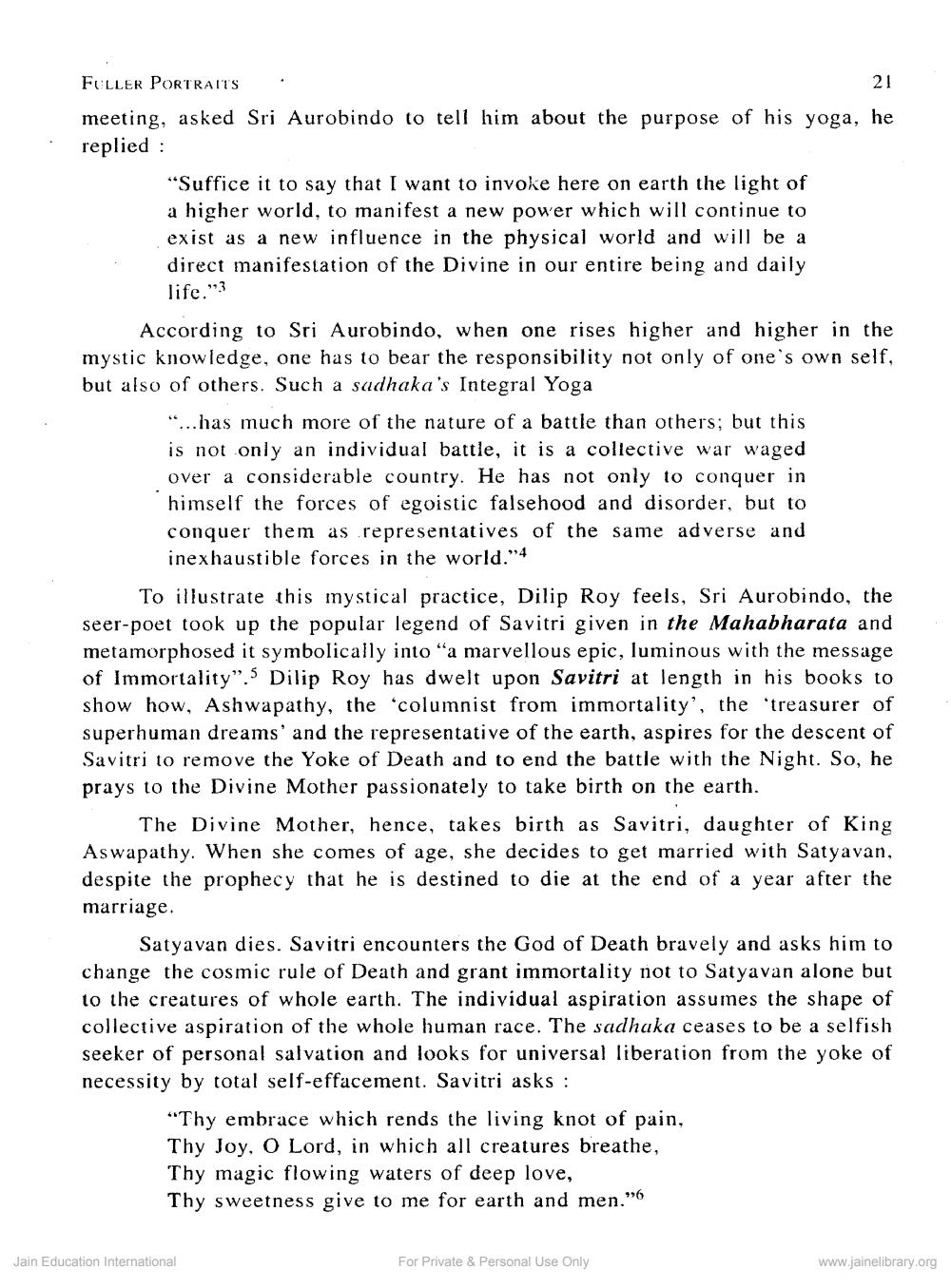________________
FULLER PORTRAITS
21
meeting, asked Sri Aurobindo to tell him about the purpose of his yoga, he replied :
"Suffice it to say that I want to invoke here on earth the light of a higher world, to manifest a new power which will continue to exist as a new influence in the physical world and will be a direct manifestation of the Divine in our entire being and daily
life."3
According to Sri Aurobindo, when one rises higher and higher in the mystic knowledge, one has to bear the responsibility not only of one's own self, but also of others. Such a sudhaka's Integral Yoga
"...has much more of the nature of a battle than others; but this is not only an individual battle, it is a collective war waged over a considerable country. He has not only to conquer in himself the forces of egoistic falsehood and disorder, but to conquer them as representatives of the same adverse and
inexhaustible forces in the world."4
To illustrate this mystical practice, Dilip Roy feels, Sri Aurobindo, the seer-poet took up the popular legend of Savitri given in the Mahabharata and metamorphosed it symbolically into "a marvellous epic, luminous with the message of Immortality" 5 Dilip Roy has dwelt upon Savitri at length in his books to show how, Ashwapathy, the 'columnist from immortality', the treasurer of superhuman dreams and the representative of the earth, aspires for the descent of Savitri to remove the Yoke of Death and to end the battle with the Night. So, he prays to the Divine Mother passionately to take birth on the earth.
The Divine Mother, hence, takes birth as Savitri, daughter of King Aswapathy. When she comes of age, she decides to get married with Satyavan, despite the prophecy that he is destined to die at the end of a year after the marriage.
Satyavan dies. Savitri encounters the God of Death bravely and asks him to change the cosmic rule of Death and grant immortality not to Satyavan alone but to the creatures of whole earth. The individual aspiration assumes the shape of collective aspiration of the whole human race. The sadhaka ceases to be a selfish seeker of personal salvation and looks for universal liberation from the yoke of necessity by total self-effacement. Savitri asks :
“Thy embrace which rends the living knot of pain, Thy Joy, O Lord, in which all creatures breathe, Thy magic flowing waters of deep love, Thy sweetness give to me for earth and men.”6
Jain Education International
For Private & Personal Use Only
www.jainelibrary.org




